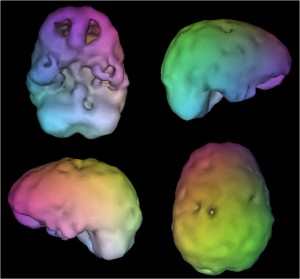 The science behind SPECT Imaging offers a breakthrough for people who needed help caring for a vital organ that people sometimes overlook in the creation of their lifestyle: the brain. SPECT stands for single photo emission computed tomography. It is a type of brain scan that uses nuclear medicine to observe the activity patterns and blood flow in glands and organs. This medical technology has become a valuable tool in detecting health problems and in preventative medicine. It became much more accessible to the public when Dr. Daniel Amen began offering SPECT imaging services in his clinics for the purpose of gauging the health of people’s brains.
The science behind SPECT Imaging offers a breakthrough for people who needed help caring for a vital organ that people sometimes overlook in the creation of their lifestyle: the brain. SPECT stands for single photo emission computed tomography. It is a type of brain scan that uses nuclear medicine to observe the activity patterns and blood flow in glands and organs. This medical technology has become a valuable tool in detecting health problems and in preventative medicine. It became much more accessible to the public when Dr. Daniel Amen began offering SPECT imaging services in his clinics for the purpose of gauging the health of people’s brains.
In the medical community, SPECT imaging is used on the brain for the purpose of studying brain injury, dementia and Alzheimer’s, seizure activity and other forms of brain disease. At Amen clinics, which are located in six cities across the United States, the medical science of SPECT imaging is combined with the practice of psychiatry to assess psychiatric issues, anxiety, memory problems, dysfunction, substance abuse, types of ADD, depression and aggression. A person can learn things about their brain that they may have spent a lifetime trying to understand in a matter of hours.
What people ingest and how people live has an immense effect on the health of their brains. A person’s diet habits, substance abuse patterns, medications and sleep habits can all be detected through SPECT imaging. The combination of the SPECT imaging, which requires no more of the patient than any medical brain scan would, and a consultation with a physician who assesses the diet and lifestyle habits of the individual, creates an accurate assessment of why the individual’s brain is in the condition that it is in, as well as how to change it if the condition is bad.